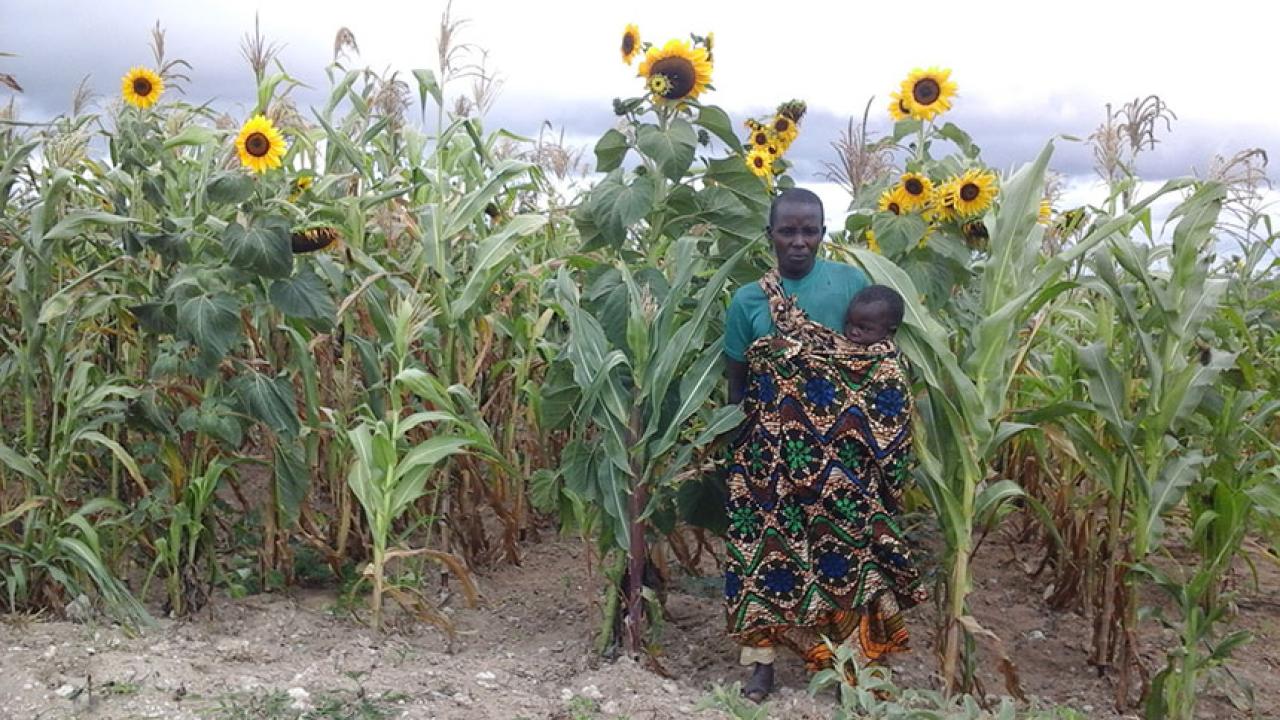Quick Summary
- Insurance can prevent households from falling into poverty in face of climate change
- Partially subsidized insurance programs can be more effective than traditional emergency aid
- Insurance will make a difference, but only to a point
The poorest people in the world are among the most vulnerable to the effects of climate change, including droughts, floods and wildfires. This is especially true for poor farmers in drought-prone regions of the world who rely on crops or livestock to feed their families.
A new study led by researchers at the University of California, Davis, shows insurance can be the most effective way to increase the resilience of poor households in the face of climate change while also preventing other households from falling into poverty. In the long-term, it also reduces the number of households that need emergency aid and stretches the aid budget further.
“If you’re in a region that’s prone to severe droughts, and you don’t do anything about it until disaster strikes, that’s expensive,” said Michael Carter, a professor of agricultural and resource economics at UC Davis and director of the Feed the Future Innovation Lab for Assets and Market Access. The study, published in the journal Environment and Development Economics, shows insurance becomes even more effective as the risk of drought increases.
Eastern Africa as model
A major driver of poverty among agricultural households is some kind of catastrophic shock, such as a drought. This is especially true in eastern Africa, which is still in its worst drought in a generation.
“This is an area of the world where a severe drought event can destroy 50 to 60 percent of a family’s wealth. Families can lose absolutely everything in the space of a couple of months,” said Carter.
Without a social safety net to protect them following a drought, households have little choice but to cut spending on food, eating only once a day or less. Extended periods of undernutrition can delay a child’s brain development and stunt growth. In the rural areas of developing countries, this causes children to make less progress with schooling. It also leads to a compromised ability to contribute to farming or livestock activities or even to earn a living.
“A child not properly fed in the early stages of life is never going to reach their human potential,” said Carter. “It can cause poverty to be passed on to future generations.”
Carter and his co-author Sarah Janzen, an assistant professor of economics at Montana State University, developed an economic model to determine what types of interventions would work best to break this cycle. The model shows that partially subsidized insurance can be much more effective than conventional aid programs that target families only after they have fallen into misery.
The small premiums poor farmers pay for coverage at the start of each season almost guarantee that they will receive funds in an emergency. Not only is this more predictable than emergency aid, it also has the potential to be self-sustaining through the payment of premiums.
“This analysis suggests that targeting vulnerable households — in addition to the already destitute — will protect households against heightened risk and minimize unnecessary poverty in future generations,” said Janzen.
Insurance will make a difference only to a point
While the study shows that insurance becomes more effective as the risk of drought or other climate-related event increases, this effect lasts only up to a point. Eventually, the risk of a catastrophic event becomes so high that poor farmers could end up spending too much money on insurance.
“If climate change gets sufficiently severe, then even addressing those at risk of falling into poverty is not going to work. Parts of the earth are going to become economically nonviable, and people are going to go elsewhere,” said Carter. The more pessimistic climate change projections suggest that we will already be facing this scenario in some parts of the earth before the end of this century.
In the short term, insurance is a smart public policy to help prevent chronic poverty, before it’s too late.
Media Resources
Amy Quinton, UC Davis News and Media Relations, 530-752-9843, amquinton@ucdavis.edu
Alex Russell, Feed the Future Innovation Lab for Assets and Market Access, 530-752-4798, parussell@ucdavis.edu
